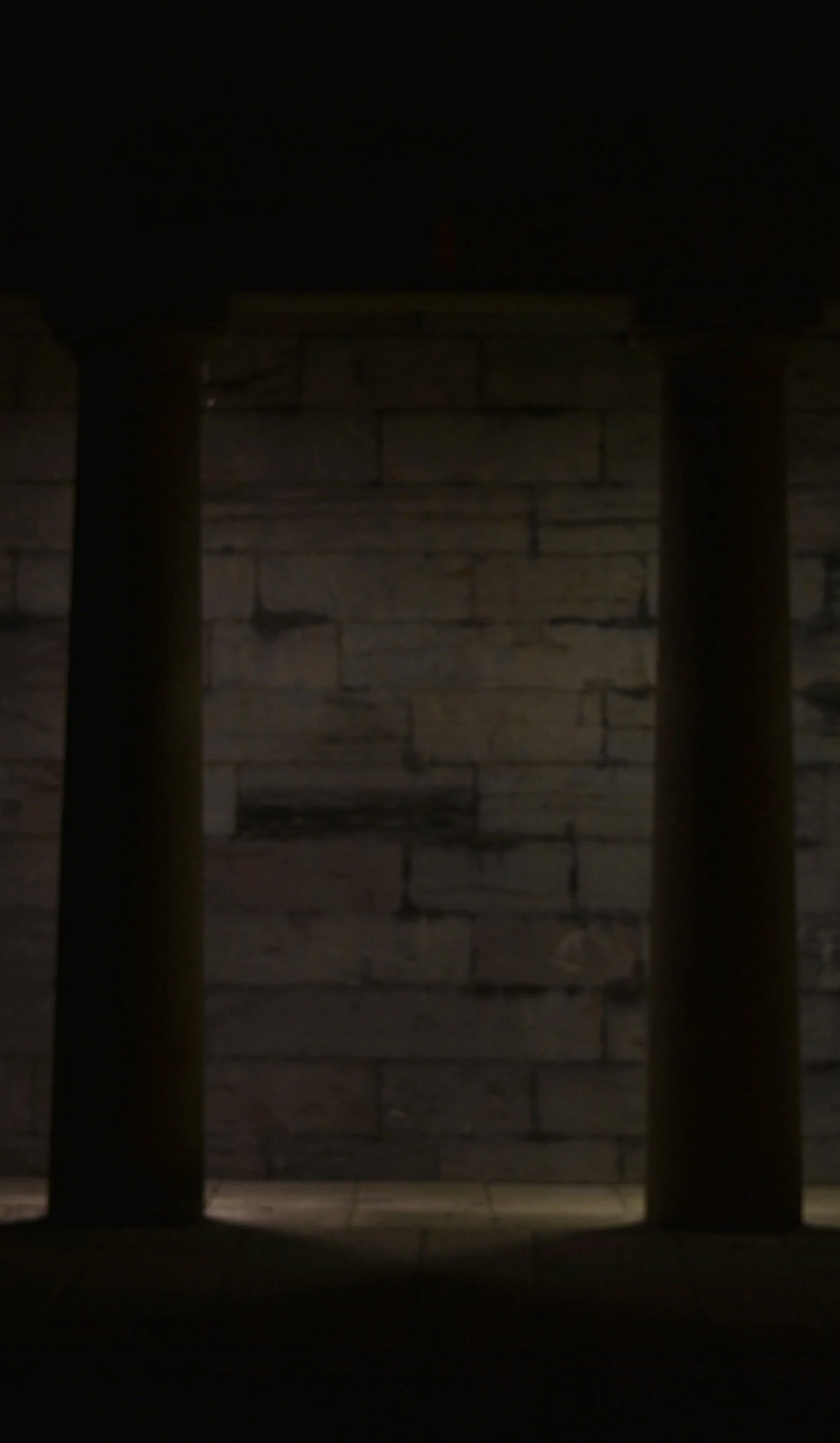Cronache della Sindone:
The Pillar of Irad
Notes by Xamot
Thursday, December 29th, 1994
Upon my return to the anomaly site, we began to explore the deeper interior of the temple. The specifics of its layout can be seen attached. The hallways were lit with a sickly green light emanating from the ceiling, but with no specific, discernable source. While exploring the interior I found a pair of two maps: a map of “Enoch called Gomorrah” and a second of “Enoch called Sha’adaam”, or, “Enochian Sodom”. The biblical tale of the destroyed cities Sodom and Gomorrah seem to be based on the destruction of Enoch integral to the founding mythology of vampire kind. More than this, these maps were able to provide much-needed insight to the scattered words Zachariah had previously scried - they completed the phrase, providing context to what was previously “(indecipherable) called Gomorrah”. It also elucidated us as to the meaning of the “fourth circle, state property”. The city of Enoch was divided into circles, and the fourth circle was that of science. The given phrase was a set of directions, the end of which remain unknown to us as of yet. Unfortunately, the map of Enochian Gomorrah was destroyed when it began to fuse with Zachariah’s hands as he held it. The other map exists still, but should be studied carefully.
We discovered an armory within the temple, as well as a barracks, and a set of four half-furnished bedrooms which were presumably intended for the use of Vampires (each room held within it a sarcophagus capable of being opened from the inside). In the armory there were quite a few swords, as well as a number of suits of armor made of a strange material similar to obsidian but far less brittle. The armor was of various sizes, but even the largest size was designed for a man no more than 5’4” in stature. Humans of past generations were reasonably shorter than modern kine, likely explaining the small armor.
Where the central antechamber on the first floor had a large basin with a golden spike in the middle, on the first sublevel the central room (which shared the same dimensions as the antechamber above) had a set of capillaries leading downward. Adjacent rooms on the first sublevel were largely for storage, but on the extremes of each of the easternmost, southernmost, and westernmost walls was the entrance to a hallway with a sign above it labeled one word: “Aralu”. Each of the three hallways seemed to have been dedicated to a different of the antediluvians who ruled in Enoch. The western hall had a mosaic of one called Mekhet, referred to as the bringer of knowledge and inventor of all things. The southern hallway was dedicated to one referred to as Vait’hara Tuii. The mosaic included described his many great triumphs, and I have reason to believe that Vait’hara Tuii could have been an archaic name for the Ventrue progenitor - possibly even his “true” name. The eastern hallway was of the greatest interest: it had no great mosaic, and where the room at the end of the hall was a throne room in the previous two cases, this room was clearly an ossuary in the making. In it was included many crates full of countless bones, likely of hundreds of individuals. This room was dedicated to one called Ashûr. Ashûr-called-Cappadocius. I had one of the bone crates removed and brought to my cellar in the farmhouse for studying, the rest stayed in the temple.
